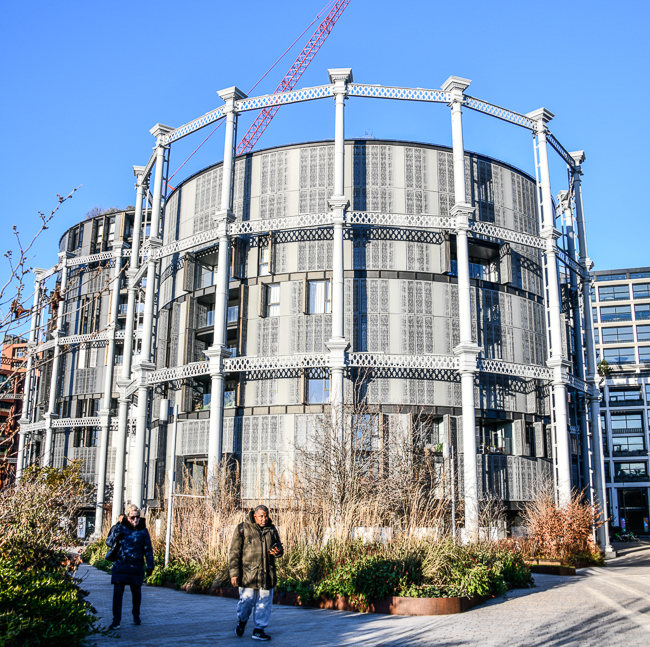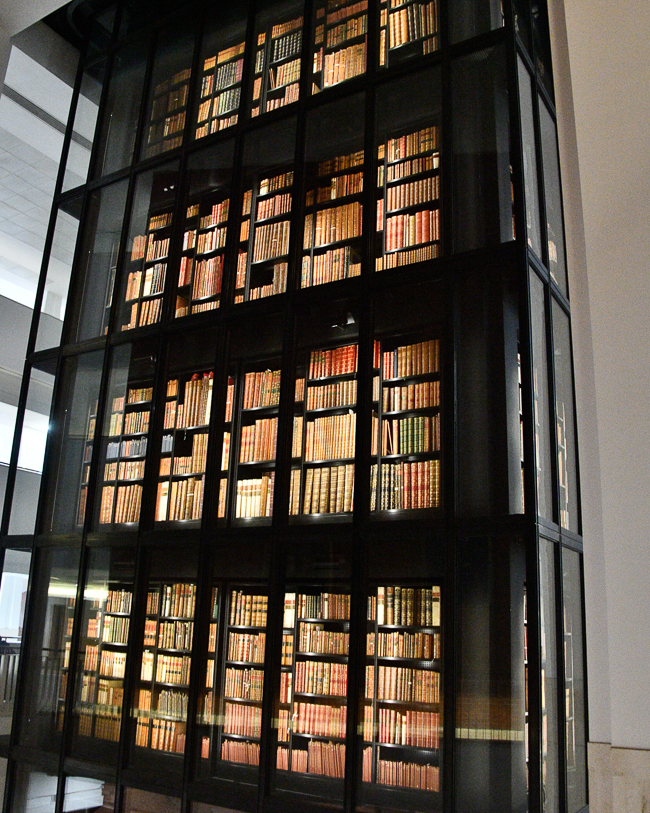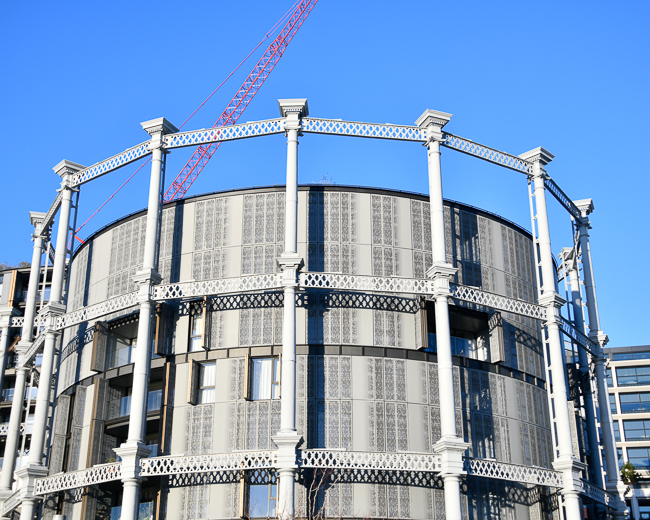December 2022
This is just one small section of the books from King George III’s library. The display dominates the British Library and is just one of many reasons to visit the library. They have rotating exhibitions and a permanent area filled with treasures from the British Library, ranging from the Magna Carta to handwritten lyrics by the Beatles, all worth the time and effort to view.
George III reigned from 1760 to 1820. He was king at the time of the American Revolution. His library contains books printed mainly in Britain, Europe, and North America from the mid-15th to the early 19th centuries. It consists of 65,000 volumes of printed books and 19,000 pamphlets (as well as manuscripts and bound volumes of maps and topographical views).
The King’s Library has had various homes during its existence. Its penultimate move was in 1828 when it was moved to the King’s Library Gallery in the British Museum, where it remained for 170 years. During WWII, on September 23, 1940, a bomb destroyed over 400 volumes. In 1998 the collection was transferred to the British Library.
This fabulous bookstore on an old Dutch barge can be found on Regent’s Canal near Granary Square. Open for at least ten years; it is the brainchild of Paddy Screech, Jonathan Privett, and Stephane Chaudat. Apparently, due to barge rules, it once had to be on the move constantly, but now it is permanently moored in a great location.
 Words on the Water are just below a project I had come to see. Gas tanks, or gas holders, as they call them in England, harken back to the Victorian times, when every town had one for storing gas that was made from coal. After the 1960s, they were used for natural gas.
Words on the Water are just below a project I had come to see. Gas tanks, or gas holders, as they call them in England, harken back to the Victorian times, when every town had one for storing gas that was made from coal. After the 1960s, they were used for natural gas.
I first read about the potential to repurpose these tanks in an architectural magazine years ago. These two are part of Gasholder Park, designed by Bell Phillips Architects.
These particular holders were built in the 1850s as part of Pancras Gasworks. The gasholders remained in use until the late 20th Century and were finally decommissioned in 2000.
They were dismantled and shipped piece by piece to Shepley Engineers in Yorkshire for the project. It took two years to restore, and when finished, they were rebuilt on the banks of the canal.
I love finding buildings I have studied from afar, especially when they are near bookstores.


